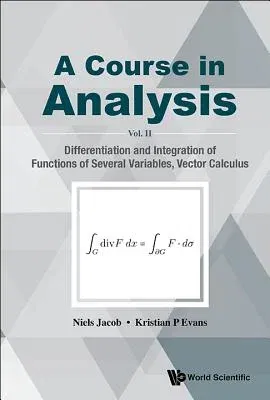'The authors give many examples, illustrations and exercises to help
students digest the theory and they employ use of clear and neat
notation throughout. I really appreciate their selection of exercises,
since many of the problems develop simple techniques to be used later in
the book or make connections of analysis with other parts of
mathematics. There are also solutions to all of the exercises in the
back of the book. As in the first volume there are some real gems in
volume II. A Course in Analysis seems to be full of these little gems
where the authors use the material or ask the readers to use the
material to obtain results or examples that the reader will certainly
see again in another context later in their studies of mathematics.
Generally, the quality of exposition in both of the first two volumes is
very high. I recommend these books.' (See Full Review)MAA ReviewsThis is
the second volume of 'A Course in Analysis' and it is devoted to the
study of mappings between subsets of Euclidean spaces. The metric, hence
the topological structure is discussed as well as the continuity of
mappings. This is followed by introducing partial derivatives of
real-valued functions and the differential of mappings. Many chapters
deal with applications, in particular to geometry (parametric curves and
surfaces, convexity), but topics such as extreme values and Lagrange
multipliers, or curvilinear coordinates are considered too. On the more
abstract side results such as the Stone-Weierstrass theorem or the
Arzela-Ascoli theorem are proved in detail. The first part ends with a
rigorous treatment of line integrals.The second part handles iterated
and volume integrals for real-valued functions. Here we develop the
Riemann (-Darboux-Jordan) theory. A whole chapter is devoted to
boundaries and Jordan measurability of domains. We also handle in detail
improper integrals and give some of their applications.The final part of
this volume takes up a first discussion of vector calculus. Here we
present a working mathematician's version of Green's, Gauss' and Stokes'
theorem. Again some emphasis is given to applications, for example to
the study of partial differential equations. At the same time we prepare
the student to understand why these theorems and related objects such as
surface integrals demand a much more advanced theory which we will
develop in later volumes.This volume offers more than 260 problems
solved in complete detail which should be of great benefit to every
serious student.


